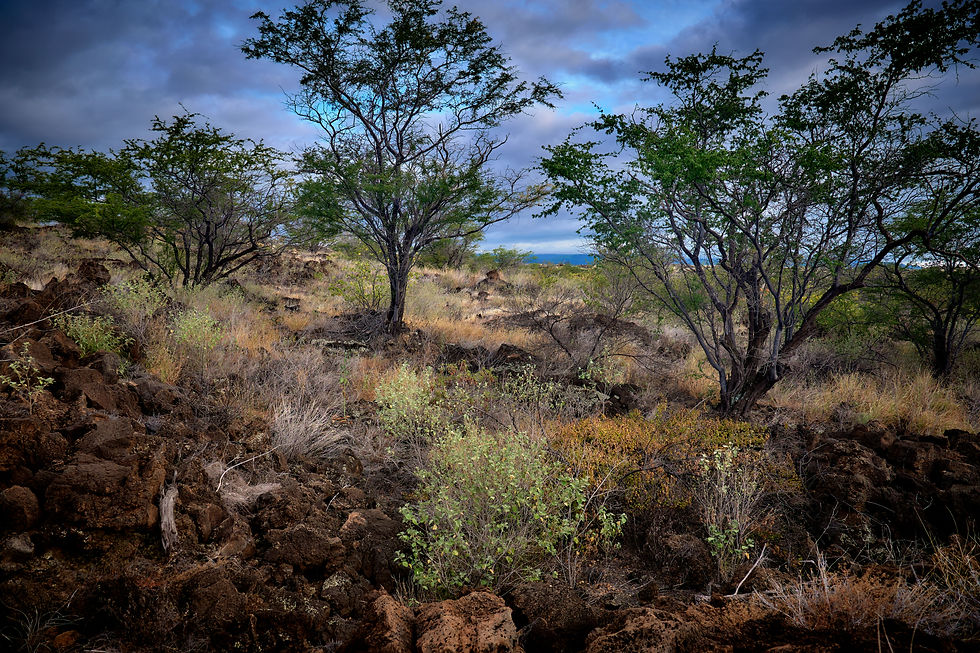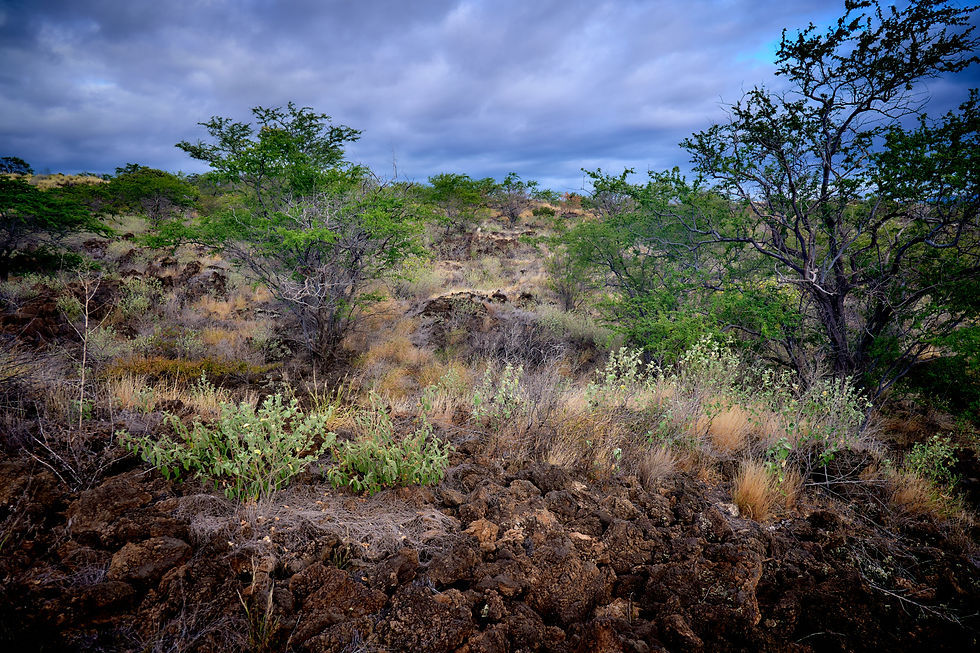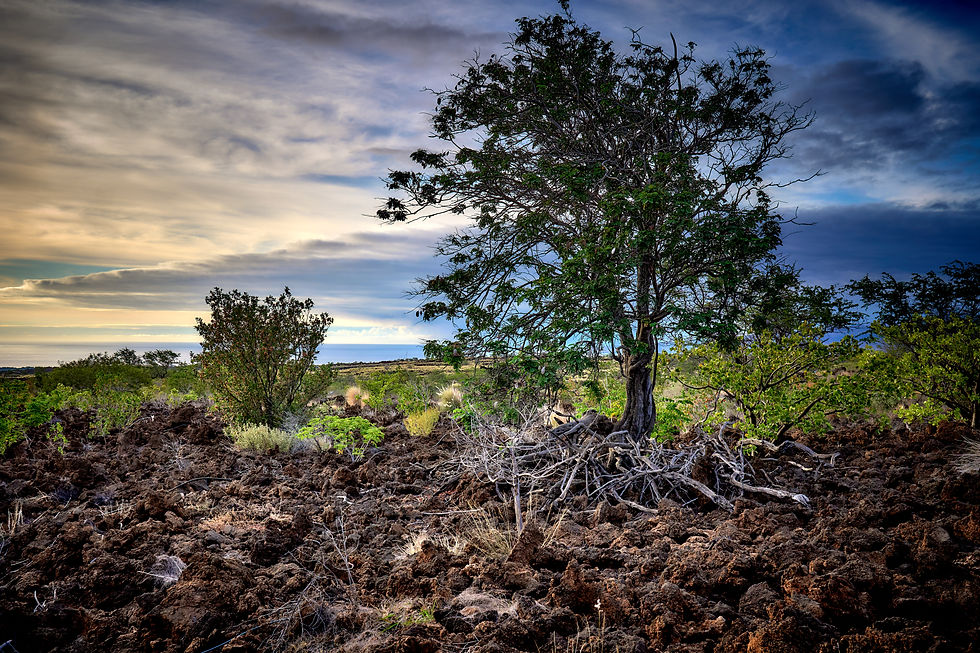Visiting the Waikoloa Dry Forest
- Thomas Upton
- May 28
- 3 min read

I've probably driven up the road from Waikoloa Beach to Waikoloa Village more than 100 times, but it wasn’t until recently that I noticed the small sign on the south side of the road announcing the “Waikoloa Dry Forest” (or WDF). What is a dry forest, and why is there one in Waikoloa?
A dry forest is a treed area residing in a dry (usually tropical) climate, where rain occurs in a brief rainy season, if at all. The trees in a dry forest adapt to this highly seasonal cycle. I certainly have never seen anything resembling a forest on this road. But as it turns out, there once was a significant forest here of indigenous trees, many now endangered. It is estimated that only ~5% of the original forest remains. Non-native plants and feral animals (e.g. goats) have accelerated their decline. The sign on the road identifies the location of a challenging initiative to preserve and re-establish these plants and trees to the point that they are self-sustaining. And it is a significant challenge, since some of these trees have dwindled to a population of less than 100 specimens, quite a few of which are in the WDF. And surprisingly, you can visit them, to see how this remarkable effort Is progressing.
If you turn off the road and drive south past several industrial facilities, you will

ultimately arrive at a fenced area with some informational signs identifying this as the entrance to the WDF.

Though specific open hours were not shown when we visited, we were told you can enter when the gate is unlocked (If you plan an impromptu visit I suggest calling to confirm). You can also sign up online for one of the guided tours that occur on the 2nd Friday of each month in the afternoon. Our guide was there to greet us and about 8-10 others. After introductions and a ceremonial blessing we took off. The guide explained that the fences are essential to keep the wildlife at bay. Staff and volunteers work to remove invasive plants and nurture the rest in the 275 acre preserve. There is a well-marked trail through the preserve and our guide identified the most significant species along the way. Here are some shots from our tour:

You can see that that trail through the preserve is rugged, carved out of the lava.





Our guide was very informative and welcoming. The fence she is touching is part of the 3.5 miles of fencing installed around the preserve to keep out destructive wildlife. Volunteeers have also created more than 4 miles of firebreaks to protect the interior and planted thousands of native plants.




Here are a few of the plants and trees that stood out to me:





The entire tour took about an hour in our case, and finished with a gathering at a covered picnic/work area where refreshments were served. I can highly recommend a visit, and especially encourage you to sign up for the guided tour, since it’s unlikely that you will be familiar with either the plant species found here or the efforts underway to protect them. You can learn more about it at their website (including visit, volunteer, and plant info) or their facebook page. It’s a great opportunity, even for those like me who think they’ve seen it all on the Island of Hawaii.




Comments